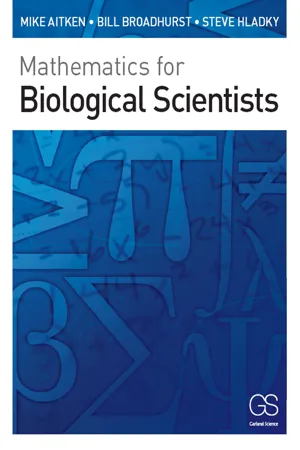Mathematics
Translations of Trigonometric Functions
Translations of trigonometric functions refer to the shifting of the graphs of sine, cosine, and tangent functions along the x-axis or y-axis. This shifting is achieved by adding or subtracting values within the function, resulting in a change in the phase or period of the graph. Understanding these translations is crucial for analyzing and graphing trigonometric functions.
Written by Perlego with AI-assistance
Related key terms
Related key terms
1 of 4
Related key terms
1 of 3
6 Key excerpts on "Translations of Trigonometric Functions"
- Lawrence S. Leff, Christina Pawlowski-Polanish(Authors)
- 2021(Publication Date)
- Barrons Educational Services(Publisher)
x = 0.•The cotangent function, like the tangent function, has no amplitude.Lesson 10-3: Transformations of Trigonometric FunctionsKEY IDEAS
The graphs of trigonometric functions can be reflected and shifted in the same way that these types of transformations are applied to the graphs of algebraic functions.REFLECTING TRIGONOMETRIC FUNCTIONS
The graphs of y = –sin x and y = –cos x are the reflections of the graphs of the basic sine and cosine curves in the x-axis, as shown in Figure 10.14 , where the solid curves represent the graphs of y = sin x and y = cos x.FIGURE 10.14 Reflecting sine (a) and cosine (b) curves in the x-axisTRANSLATING TRIGONOMETRIC FUNCTIONS
Trigonometric functions, like algebraic functions, can be shifted horizontally, vertically, or both horizontally and vertically. For example:•Adding a constant, k, to the right side of the equation y = a sin bx or y = a cos bx shifts the graphs of these functions up when k > 0 and down when k < 0. For example, the graph of y = sin x + 3 is the graph of y = sin x shifted up 3 units, as shown in Figure 10.15 . Notice that the line y = 3 is a horizontal line of symmetry.FIGURE 10.15 Graph of y = sin x + 3FIGURE 10.16 Horizontal shift of y = cos x by•The function shifts the graph of y = cos x to the right by units, as shown in Figure 10.16 , where the solid curve is the graph of y = cos x. A horizontal translation of a periodic function is called a phase shift.SOME TRIGONOMETRIC FACTSEXERCISE 1 Finding an Equation of a Periodic Function Used as a Model•The line y = k is a horizontal line of symmetry of the graphs of y = a sin (bx) + k and y = a cos (bx) + k.•The broken curve in Figure 10.16 represents the graph of , which coincides with the graph of y = sin x. Evidently, sin .The number of visitors at a resort rises and falls during the year according to the accompanying graph. Determine an equation of this graph in terms of the month number, t- eBook - ePub
The Ellipse
A Historical and Mathematical Journey
- Arthur Mazer(Author)
- 2011(Publication Date)
- Wiley(Publisher)
But trigonometric functions, originally established for triangulation, held other secrets that would not be fully uncovered until the beginning of the twentieth century. In 1822, Fourier published a solution to a problem of heat transfer across a rod. It is assumed that the rod has an initial arbitrary temperature distribution, not uniform, and that heat cannot escape from the rod. The problem is to find the temperature distribution across the rod at any time. Using calculus, it was possible to derive an equation that determine the evolution of the temperature at each point on the rod. Fourier showed that trigonometric functions satisfy the equation and that solutions are additive; multiples of solutions could be added together and the result is also a solution to the heat equation. To complete his analysis, Fourier had to demonstrate that he could find a composition of trigonometric solutions that satisfy the initial temperature distribution. Toward this end, he produced a method for describing the initial temperature distribution with a series expansion of trigonometric functions that he claimed was in fact equal to the initial temperature distribution. Nobody could blame Fourier for not being able to prove his claim. Fourier’s series initiated a flurry of research into this issue that involved nearly all of the most capable mathematicians of the nineteenth century. No single individual can lay credit to fully solving the problem. The research culminated in a val idation of Fourier’s approach in the earlier part of the twentieth century. The Fourier transform, which allows the U.S. Navy to determine if a noise relayed by an undersea microphone is from a whale or a submarine, is an application that follows from this highly theoretical research.This chapter follows the path of Ptolemy from a modern perspective. A table of trigonometric functions is developed. Along the way, definitions are introduced andidentities that assist with finding table entries are also demonstrated. Afterward, an application is cons idered, and Aristarchus’ calculation is revisited. In addition, we attend to unfinished business; the determinant of a two-dimensional transformation is demonstrated to have the property claimed in Section 4.6.5. In addition to the above material, one excursion is taken. The Greeks were able to perform amazing constructs with a compass and a straight edge. One achievement is the inscription of a pentagon into a sphere; this construction assisted Ptolemy in the development of his table of chords. We will demonstrate the construction. Finally, an understanding of trigonometry allows us to relate polar coordinates, a method of coordinating the plane using radial and angular measurements, to standard Cartesian coordinates. This chapter demonstrates the relation that is critical for uncovering the ellipse.5.1 TRIGONOMETRIC FUNCTIONS5.1.1 Basic DefinitionsThis section presents the basic definitions of the trigonometric functions. Let a unit circle be given over a Cartesian plane with the usual (x , y ) coordinates. Let an angle θ 0 be given by a point (x 0 , y 0 ) on the circle; θ 0 is the angle formed along the arc of the circle from the x axis to the point (x 0 , y 0 ) (Figure 5.2 ). The trigonometric functions are functions of the angle. The table below presents their definition for an arbitrary angle θ with corresponding coordinates (x , y ) on the unit circle. Note that the functions are given in terms of the (x , y - eBook - ePub
- Mike Aitken, Bill Broadhurst, Stephen Hladky(Authors)
- 2009(Publication Date)
- Garland Science(Publisher)
frequency analysis, which will not be considered in this book.The properties of the trigonometric functions are easiest to understand when they are considered as functions of an angle α. Note it is conventional to use Greek letters like α, β, γ, θ, and ϕ to stand for angles. We could use any symbols we like but it is easier to communicate if we use the symbols that others expect. The definitions of sin(α) and cos(α) when α is an angle are shown in Figure 4.10 . This shows a circle with radius r with a line drawn from the center to the circle at angle α relative to the x axis. We can draw a right angle triangle with base x, height y, and hypotenuse r, as shown. The trigonometric functions, angle, sine, cosine, and tangent, are defined asa n g l e: α = arc length/ r ,s i n e: sin( α )= y / r ,c o s i n e: cos( α )= x / r ,t a n g e n t: tan( α )= sin( α )/ cos( α )= y / x .(EQ4.13) Figure 4.10Definitions of the sine, cosine, and tangent functions when the argument, α, is an angle. sin(α) = y/r, cos(α) = x/r, and tan(α) = y/x. The line, whose length is y, is perpendicular to the x axis.The definitions are very simple – the hard part is actually finding accurate values for x/r and y/r when we know the angle, α. The formulae that enable us to calculate the trigonometric functions are complicated but fortunately these have been programmed into scientific calculators or used to print tables. All we need to do is look up the values. A short table is provided in Appendix 3 . The only catch is that with many tables we first need to convert the angle to degrees (multiply by 180/π), whereas with calculators we have to find out how to set it to accept angles in radians. More conveniently we can just type something like ‘= sin(2.73)’ into a spreadsheet program like Microsoft Excel® - Mary P Attenborough(Author)
- 2003(Publication Date)
- Newnes(Publisher)
5Trigonometric functions and waves
5.1 Introduction
Waves occur naturally in a number of situations: the movement of disturbed water, the passage of sound through the air, vibrations of a plucked string. If the movement of a particular particle is plotted against time, then we get the distinctive wave shape, called a sinusoid. The mathematical expression of a wave is found by using the trigonometric functions, sine and cosine. In Chapter 6 of the Background Mathematics Notes on the companion website for this book we looked at right angled triangles and defined the trigonometric ratios. The maximum angle in a right angled triangle is 90° so to find the trigonometric functions, sin(t ), cos(t ), and tan(t ) where t can be extended over the real numbers, we need a new way of defining them. This we do by using a rotating rod. Usually the function will be used to relate, for instance, the height of the rod to time. Therefore, it does not always make sense to think of the input to the cosine and sine functions as being an angle. This problem is overcome by using a new measure for the angle called the radian, which easily relates the angle to the distance travelled by the tip of the rotating rod.Waves may interfere with each other, as for instance on a plucked string, where the disturbance bounces off the ends producing a standing wave. Amplitude modulation of, for instance, radio waves, works by the superposition of a message on a higher signal frequency. These situations require an understanding of what happens when two, or more cosine or sine functions are added, subtracted, or multiplied and hence we also study trigonometric identities.5.2 Trigonometric functions and radians
Consider a rotating rod of length 1. Imagine, for instance, that it is a position marked on a bicycle tyre at the tip of one of the spokes, as the bicycle travels along. The distance travelled by the tip of the rod in 1 complete revolution is 2π (the circumference of the circle of radius 1). The height of the rod (measured from the centre of the wheel), y, can be plotted against the distance travelled by the tip as in Figure 5.1- eBook - ePub
- Seymour B. Elk(Author)
- 2016(Publication Date)
- Bentham Science Publishers(Publisher)
On the other hand, using radian measurement, the formulations such as sin x 2, sin, [or even (x+1) sin x], etc. are readily viable. One can even allow “messy” functions such as sin(sin x), etc. without confusion or ambiguity. This is in direct contradistinction to traditional trig courses which allow the alternation of trig and arc trig functions, but disallow trg(trg x) or arctrg(arctrg x). For example, ; however, sin(tan) was undefined, since the tangent function had to be applied to an angle ONLY, rather than a number. Using dimensionless numbers (i.e., radians) on the other hand,. Probably the most important use of trigonometry involves the solution of triangles; namely, given three of the five independent components (namely all three of the sides and two of the angles. Remember that the third angle is NOT independent in plane trigonometry. This is in contradistinction to the trigonometry of a sphere wherein the three angles are independent. See Section 2.6 below). The simplest way to do this is to develop two important relations between a trig function of one or more of the angles along with some of the sides in a general triangle. These designated as the Law of Sines and the Law of Cosines are proved as follows: LAW OF SINES: From any vertex of a triangle, say C, draw the“altitude”(the line segment from the vertex perpendicular to the opposite side - extended if necessary). (See Fig. 2.4-6). Fig (2.4-6). Triangle Used to Derive the Laws of Sines and Cosines. Call this length h. Note that the sides a and b are the hypotenuses of respective right triangles and thus: Eliminating h using method #2 of Section 2.3. yields: LAW OF COSINES: Label the parts into which side c has been divided by drawing h above as: x and c−x - eBook - ePub
Elementary Mathematics from an Advanced Standpoint
Arithmetic, Algebra, Analysis
- Felix Klein(Author)
- 2014(Publication Date)
- Dover Publications(Publisher)
II. The Goniometric FunctionsLet me say, before beginning, that the name goniometric functions seems preferable to the customary name trigonometric functions , since trigonometry is but a particular application of these functions, which are of the greatest importance for mathematics as a whole. Their inverse functions are analogous to the logarithm, while they themselves are analogous to the exponential function. We shall call these inverse functions the cyclometric functions .1. Theory of the Goniometric Functions
As a starting point for our theoretical considerations let me suggest the question as to the most appropriate way of introducing the goniometric functions in the schools. I think that here also it would be best to make use of our general principle of quadrature. The customary procedure, which begins with the measurement of the circular arc, does not seem to me to be so very obvious, and it lacks, above all, the advantage of affording a simple and coherent control both of elementary and advanced fields.Again I shall make immediate use of analytic geometry. Let us start with the unit circleand consider the sector formed by the radii to the points A (x = 1, y = 0) and P (x , y ) (see Fig. 63 ). In order to be in agreement with the usual notation, I shall denote the area of this sector by ϕ /2. (Then the arc in the customary notation will be ϕ .)I shall define the goniometric functions sine and cosine of ϕ as the lengths of the coordinates x and y of the limiting point P of the sector ϕ /2:The origin of this notation is not clear. The word “sinus” probably arose through an erroneous translation of an Arabic word into Latin. Since we did not start from the arc we cannot well designate the inverse functions, i.e., the double sector, as, a function of the coordinates, by using the customary terms arc sine and arc cosine, but it is natural by analogy to call ϕ /2 the “area” of the sine (or cosine) and to writeFig. 63.
Index pages curate the most relevant extracts from our library of academic textbooks. They’ve been created using an in-house natural language model (NLM), each adding context and meaning to key research topics.
Explore more topic indexes
Explore more topic indexes
1 of 6
Explore more topic indexes
1 of 4





